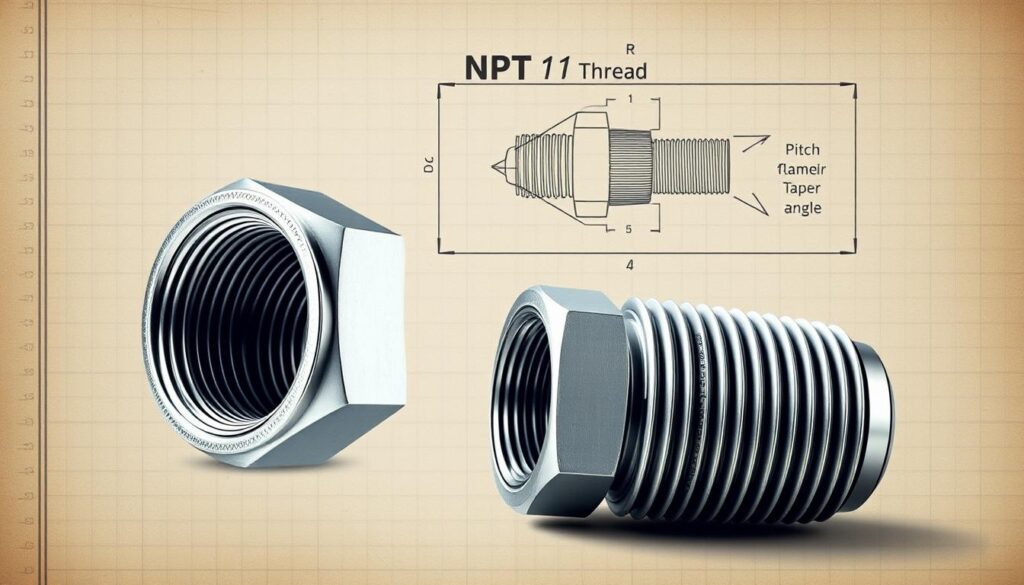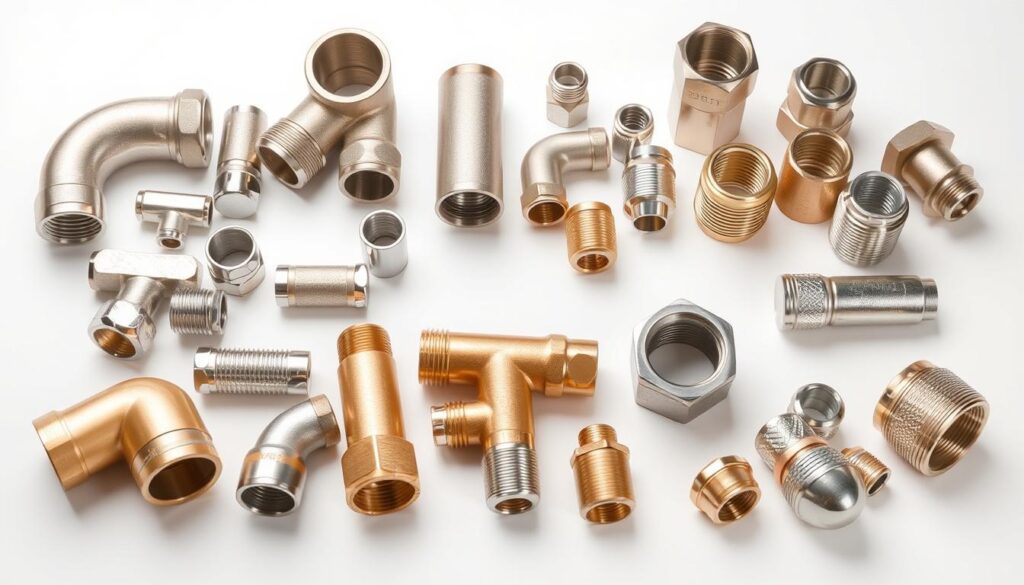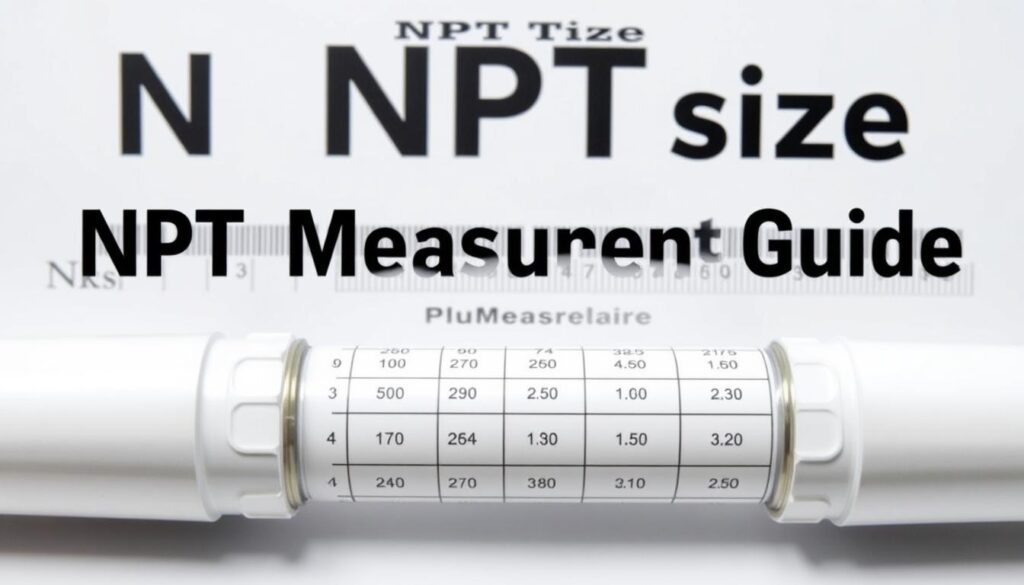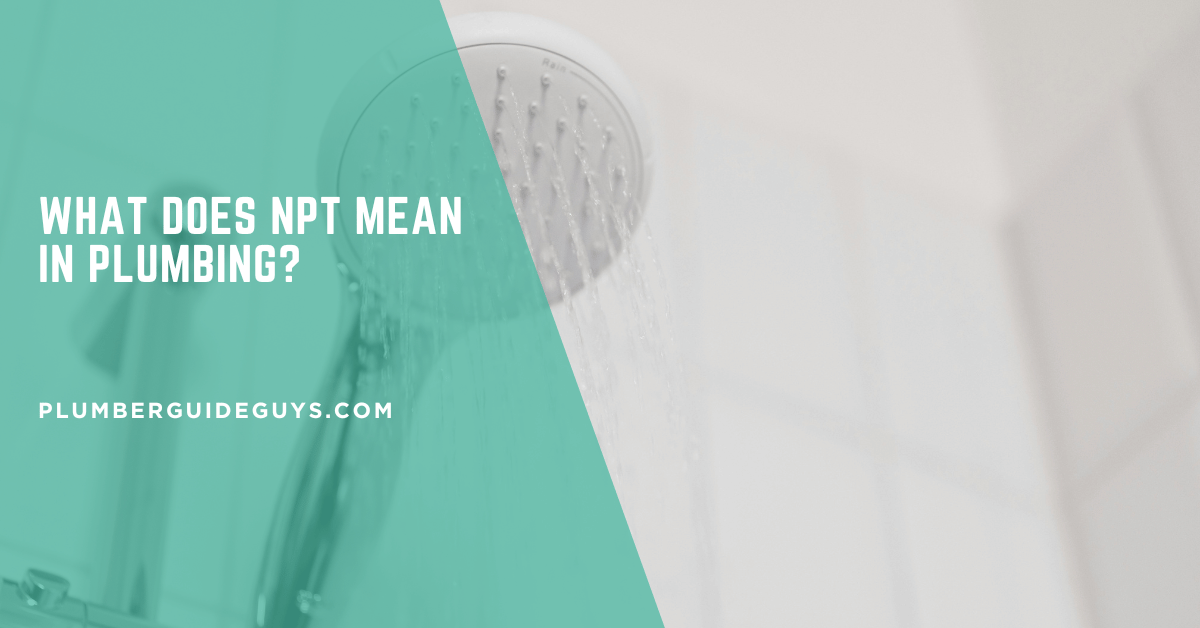Affiliate Disclosure
Plumber Guide Guys is a participant in the Amazon Services LLC Associates Program, an affiliate advertising program designed to provide a means for sites to earn advertising fees by advertising and linking to Amazon.
What Does NPT Mean in Plumbing? Ever wondered what secret code plumbers use? It keeps water flowing smoothly through pipes and connections. NPT might seem like just another technical term. But, it’s a key standard for reliable plumbing systems in the United States.

Exploring NPT, you find it stands for National Pipe Thread. It’s a standardized threading system for pipes, valves, and fittings. This plumbing NPT thread definition is more than a measurement. It’s a precise engineering solution for tight, leak-proof connections in homes, businesses, and industries.
Knowing about NPT is vital for both professional plumbers and DIY fans. These specialized threads help ensure different parts can be securely connected. This prevents water leaks and keeps systems working well.
Key Takeaways
- NPT means National Pipe Thread, a standard pipe threading system
- Used extensively in United States plumbing applications
- Ensures secure and leak-proof pipe connections
- Critical for both professional and home plumbing projects
- Standardizes pipe and fitting connections across industries
Table of Contents
Understanding NPT (National Pipe Thread) Basics
National pipe thread in plumbing is a key standard that changed fluid connection systems. It started in the 19th century’s industrial growth. It made a uniform way to connect pipes and fittings across many industries.
NPT fittings show off precision engineering. Their unique design is key in modern plumbing. They have special features that are vital for today’s plumbing needs:
- 60-degree thread angle
- Tapered design with 1/16 inch taper per inch
- Standardized measurement specifications
Key Components of NPT Threads
Knowing the parts of NPT threads is important. It helps both pros and DIY folks see their complexity. The threads are carefully made for secure and leak-free connections in plumbing systems.
Historical Development of NPT Standards
The growth of NPT standards shows the tech progress in industrial making. It was made to fix pipe connection issues. These standards brought a uniform threading method that worked in different making places.
Why NPT is Important in Modern Plumbing
NPT threads are vital today because they offer reliable connections. Their design ensures consistent sealing and stops leaks. This makes them essential in homes, businesses, and factories.
What Does NPT Mean in Plumbing?
NPT stands for National Pipe Thread. It’s a key standard in plumbing that shows how pipes and fittings connect securely. Knowing what NPT means can prevent leaks and connection failures.
The plumbing NPT thread definition is about a special threading design. It’s used a lot in pipe connections for homes, businesses, and industries. These threads are tapered, which makes a tight, leak-resistant seal when pipes and fittings are joined.
- NPT threads are standardized by the American National Standards Institute (ANSI)
- They feature a 60-degree thread angle
- Designed to create a reliable seal without additional sealing compounds
In simple terms, NPT threads mean a secure connection method. They keep fluid and gas transport systems leak-free. Plumbers and engineers trust NPT threads for their consistent, dependable connections.
| NPT Thread Characteristic | Specific Detail |
|---|---|
| Thread Angle | 60 degrees |
| Taper Rate | 1/16 inch per foot |
| Primary Usage | Pipe connections in fluid systems |
Whether you’re a pro plumber or a DIY fan, understanding NPT threads is key. It helps you make better choices when working with pipe connections and plumbing systems.
Essential Characteristics of NPT Threads
Understanding NPT (National Pipe Thread) standards is key for plumbing experts. These threads are vital for making strong, leak-free pipe connections. They are used in many different settings.
Thread Angle and Design Fundamentals
NPT threads have a unique 60-degree angle. This angle helps ensure a tight seal and strong connection. When you learn to spot NPT threads, you’ll see a few important features:
- A precise 60-degree angular profile
- Tapered thread design
- Specific dimensional standards
Tapered vs. Straight Threads
NPT threads are tapered, not straight. This design creates an interference fit that boosts sealing. The taper is 1/16 inch per inch, making connections tight and leak-free.
Standard Measurements and Specifications
It’s important for pros to know the exact measurements of NPT threads. These standards help ensure pipes work well together in different systems.
| Thread Characteristic | Specification |
|---|---|
| Thread Angle | 60 degrees |
| Taper Rate | 1/16 inch per inch |
| Thread Type | Tapered |
Knowing NPT thread details is vital for making dependable plumbing connections in many places.
Different Types of NPT Fittings

NPT fittings are key in plumbing systems, providing flexible connections for many uses. They come in various designs, each for a specific task in piping networks. Knowing about npt fittings explained helps pick the best fit for your project.
The most common NPT fittings include:
- Couplings: Used to connect two pipes of the same diameter
- Elbows: Create directional changes in pipe routing
- Tees: Allow branching connections in pipe systems
- Reducers: Connect pipes with different diameter sizes
- Adapters: Transition between different thread types
When comparing npt vs other pipe threads, NPT fittings stand out for their sealing. Their tapered design makes a tight seal through mechanical compression. This makes them perfect for high-pressure and water-tight needs.
| Fitting Type | Primary Function | Common Applications |
|---|---|---|
| Coupling | Joining pipes | Residential plumbing, water lines |
| Elbow | Changing pipe direction | HVAC, industrial piping |
| Tee | Creating branch connections | Irrigation, processing systems |
Choosing the right NPT fitting depends on your plumbing needs, pressure, and environment. Always check professional advice for correct installation and performance.
Male vs. Female NPT Connections
Knowing about NPT standards for plumbing is key for good pipe work. NPT (National Pipe Thread) has two main types: male and female threads. These are vital for a leak-free plumbing system.
Understanding Male Pipe Thread (MPT)
Male Pipe Thread (MPT) has external threads for fitting into female connections. It has a few key features:
- Tapered design for better sealing
- External threading on the pipe’s outside
- Used in valves, fittings, and connections
Understanding Female Pipe Thread (FPT)
Female Pipe Thread (FPT) is the opposite of MPT, with internal threads for male connections. Its main traits are:
- Internal threading in the pipe fitting
- Designed for a tight, secure fit
- Common in plumbing fixtures and parts
Proper Connection Techniques
For a reliable NPT connection, pay close attention to detail. Here are some key steps:
- Clean the threads well before connecting
- Use the right thread sealant
- Make sure threads engage properly
- Avoid over-tightening to prevent thread damage
“A well-executed NPT connection is the foundation of a reliable plumbing system.” – Professional Plumbing Association
Understanding male and female NPT threads helps make plumbing installations more effective and lasting.
NPT Size Standards and Measurements
Understanding NPT pipe sizes can be tough for both pros and DIY fans. The npt pipe size chart is key for picking the right fittings. It helps make sure connections work well in plumbing jobs.

Learning about npt threads shows that pipe sizes aren’t always what they seem. This can puzzle those working with plumbing.
- Nominal sizes represent a standard classification
- Actual pipe dimensions may differ from nominal size
- Thread specifications are critical for proper fitting
To measure NPT threads right, you need the right tools and methods. A thread gauge or caliper is essential for getting the thread details.
| Nominal Pipe Size | Actual Outer Diameter | Thread Count |
|---|---|---|
| 1/8″ | 0.405″ | 27 TPI |
| 1/4″ | 0.540″ | 18 TPI |
| 1/2″ | 0.840″ | 14 TPI |
| 3/4″ | 1.050″ | 14 TPI |
Pro plumbers focus on exact measurements for leak-free connections. Accuracy is key when working with NPT fittings. Always check your measurements and use the right tools for thread identification.
Pro Tip: Always verify thread specifications before making connections to prevent leaks or system failures.
Common Applications of NPT in Plumbing Systems
National pipe thread (NPT) is key in many plumbing systems. It’s used in various sectors. Knowing about NPT fittings explained shows their value in today’s world.
NPT is more than just connecting pipes. It’s used for reliable and secure connections in many places.
Residential Plumbing Essentials
In homes, NPT fittings are vital for keeping water inside. They’re used in:
- Water heater installations
- Faucet connections
- Shower valve assemblies
- Irrigation system components
Industrial Applications
In industrial settings, NPT threads are a must. They offer:
- Leak-resistant seals
- High-pressure resistance
- Compatibility with various materials
- Reliable fluid transport systems
Commercial Plumbing Systems
Big commercial places need NPT fittings for their plumbing. They’re used in:
- HVAC system connections
- Water distribution networks
- Fire suppression systems
- Mechanical equipment installations
Understanding NPT threads shows their importance. They keep plumbing systems working well in homes, industries, and big buildings.
Installation and Maintenance Best Practices
Knowing npt standards for plumbing connections is key for reliable and leak-free setups. Proper thread prep and upkeep can greatly extend your plumbing system’s life.
Here are the top best practices for NPT threads:
- Clean threads well before installing
- Check threads for damage or wear
- Use the right thread sealants
- Avoid over-tightening connections
First, learn to spot npt threads correctly. They have a tapered design and a consistent thread pitch, marking standard NPT connections.
| Installation Step | Key Considerations |
|---|---|
| Thread Cleaning | Remove dirt, rust, and old sealant completely |
| Sealant Application | Use Teflon tape or pipe dope sparingly |
| Tightening | Apply moderate, even pressure |
Pro tip: Always check for proper thread engagement and ensure a tight seal without forcing the connection. Gentle, careful installation prevents leaks and thread damage.
Regular upkeep is vital for lasting NPT connections. Check your connections often for wear, corrosion, or leaks. Replace parts showing significant wear to keep your system strong.
Conclusion
Knowing what NPT means in plumbing is key for both pros and DIY fans. National pipe thread (NPT) is a standard for connecting pipes. It makes sure pipes are installed safely and securely in homes, businesses, and factories.
Understanding NPT thread helps you choose the right pipe fittings. Whether fixing pipes, building new, or working on big projects, knowing about thread design is vital. It helps avoid leaks and system failures that cost a lot.
The plumbing world keeps changing, but NPT stays important for strong piping systems. Learning about NPT standards lets you see the precision engineering behind safe water and systems. This is true for many industries.
As tech gets better, keeping up with plumbing standards like NPT is important. Remember, the right thread, how you connect it, and upkeep are essential. They lead to plumbing that lasts a long time without leaks.

